Research Updates
March 2023 Update
To date, we have developed and tested several different hydromulch formulations using different cellulosic materials (paper, hemp hurds, wood fiber) combined with various organic tackifiers (guar gum, psyllium husk, and camelina meal). Application technology to apply the hydromulches has been developed and tested by our farmer collaborator, Ross Lockhart, and by teams at North Dakota State and Washington State Universities. During the 2022 field season, teams at these two institutions applied and evaluated several hydromulch formulations in an organic day-neutral strawberry production system. The formulations we tested were: (1) newsprint paper alone; (2) newsprint + 2% guar gum; (3) newsprint + 6% guar gum; (4) newsprint + 2% psyllium husk; and (5) newsprint + 6% psyllium husk. All formulations were compared to an industry standard black polyethylene mulch. In North Dakota, one formulation containing a 6% guar gum tackifier performed nearly as well as plastic mulch for weed suppression and outperformed plastic mulch in terms of strawberry yield. The Washington site was much more weedy, but the 6% guar gum formulation also performed best there, and all hydromulches protected yield as well as plastic mulch, in spite of heavy weed pressure. We will continue to refine and test hydromulch formulations while also focusing on the soil impacts caused by hydromulch biodegradation in the soil.
A template that describes the data needed for the economic analysis has been developed and shared with project team members. These data will be used to estimate the costs of hydromulch formulation, and to compare the net benefits of using hydromulch relative to standard mulching practice. Data related to economic analyses were collected in the process of conducting research activities. We hope to show that hydromulching could be an effective way to replace some of the plastic mulch used in organic horticultural production.
June 2022 Update: MulcH2O, Biodegradable Composite Hydromulches for Sustainable Organic Horticulture
Hydromulches are materials applied in liquid form as a mulch around crops to prevent weeds and conserve moisture. Currently, researchers at North Dakota State University, Montana State University, the USDA ARS in Morris, Minnesota, and Washington State University, along with several farmers are collaborating on a NIFA-OREI funded research project, MulcH2O, to develop hydromulching systems for organic production. Eventually, they hope to find efficient, cost-effective ways for growers to make and apply biodegradable hydromulches using locally available materials that will be permissible under National Organic Program regulations.
Since September, 2021, members of the MulcH2O team have been hard at work experimenting with different hydromulch materials and formulations, as well as the first prototypes of hydromulch application equipment! At Montana State University, Dilpreet Bajwa and Andrew Durado conducted tests of different potential hydromulch materials to measure how well they can withstand rain, as well as their puncture resistance, tensile strength, porosity, density, and soil adhesion. Sharon Weyers of the USDA in Morris, Minnesota will be testing the effects of the most promising formulations on soil health. Team members are also testing different weed seeds to see whether hydromulch impedes their germination. The main ingredient of hydromulches is a cellulose-based material such as paper or wood fiber. Because the composition and properties of paper can vary, researchers across the different project sites are using newsprint paper from the same source. A percentage of another tackifier ingredient such as guar gum, psyllium husk, or camelina meal may help to maintain the integrity of fibrous material, avoid clumping and make the hydromulch more durable. In the lab, the ingredients are blended together with water and dried in an oven for testing.
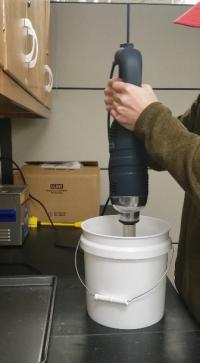
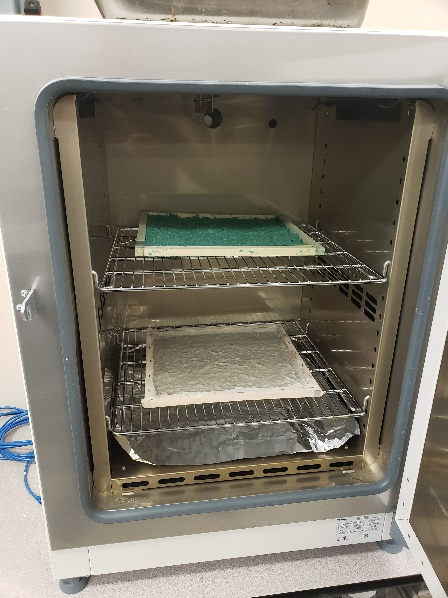
Along with finding the best combinations of ingredients, researchers are looking at how to apply it efficiently and evenly. In spite of wet weather in North Dakota, Ross Lockhart of Heart and Soil Farm, along with Waqas Ahmad and Greta Gramig of North Dakota State University, conducted the first trial of a hydraulic powered pump applicator mounted on a tractor behind a transplanter. He sprayed hydromulch around freshly planted kohlrabi plants from two angled nozzles. In this experiment, which focused primarily on how well the applicator machine worked, a commercially available hydromulch formulation was used; however, since the manufacturer does not divulge all the ingredients of this green-colored mulch, it would likely not be approved for use in organic production. Since the consistency of the mixture was lumpy, there was some clogging of the nozzles, resulting in a somewhat uneven application. While a system like this one is potentially advantageous to growers in terms of being able to transplant and apply hydromulch in the same pass, adjustments need to be made to the mixture and/or the agitation in the machine so that fewer clumps form. Even though some plants got battered during the application, plant survival was very good. In addition, Ross also thought that two sets of nozzles, positioned one behind the other, might improve coverage.
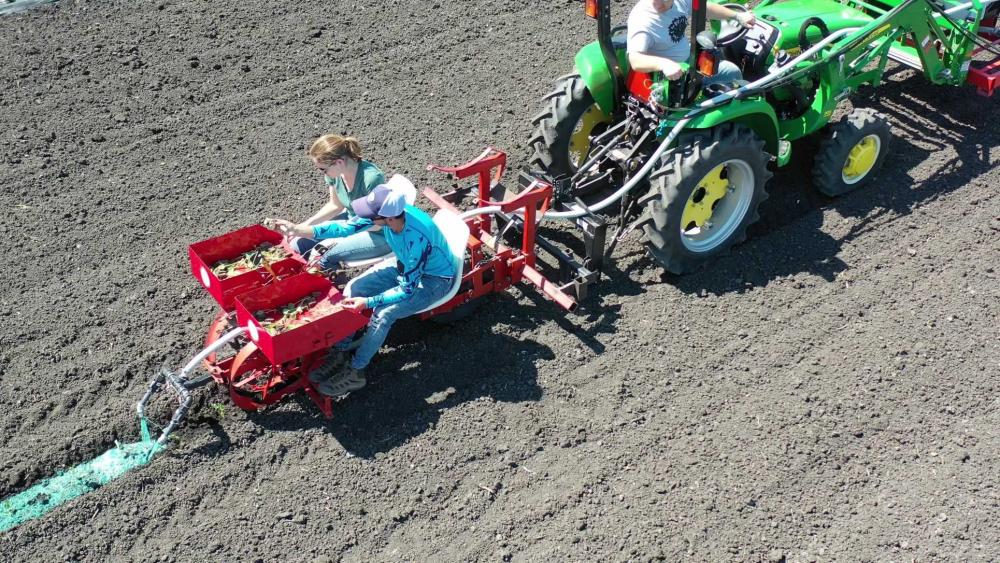
Meanwhile, at Washington State University, Dakota McFadden and Lisa Wasko DeVetter tried out a second machine prototype. Newsprint paper was hydrated for several days and then pumped into a tractor carrying a 50-gallon drum. Tackifiers of psyllium or guar gum of various percentages were added in the drum while the newsprint paper was being mixed and immediately prior to application. The hydromulch was then sprayed on pre-formed raised bed rows, and strawberry plants were planted. Future improvements to this system may include a second set of nozzles, and making nozzles with adjustable angles for different crops. The experiment will be replicated in North Dakota and contribute to the team’s knowledge of how hydromulch formulation impacts performance.
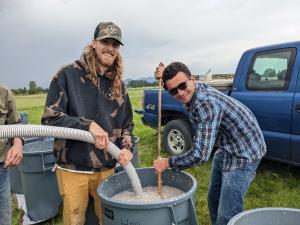
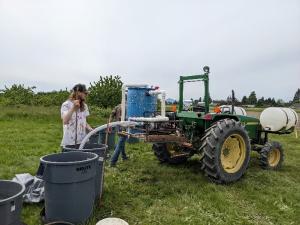
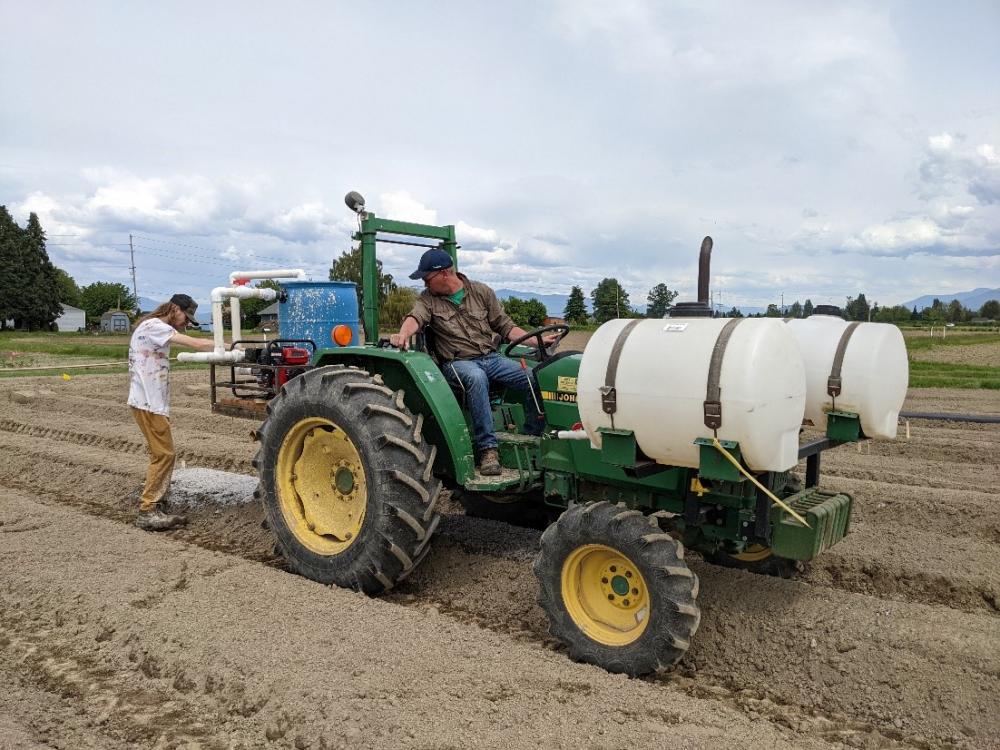
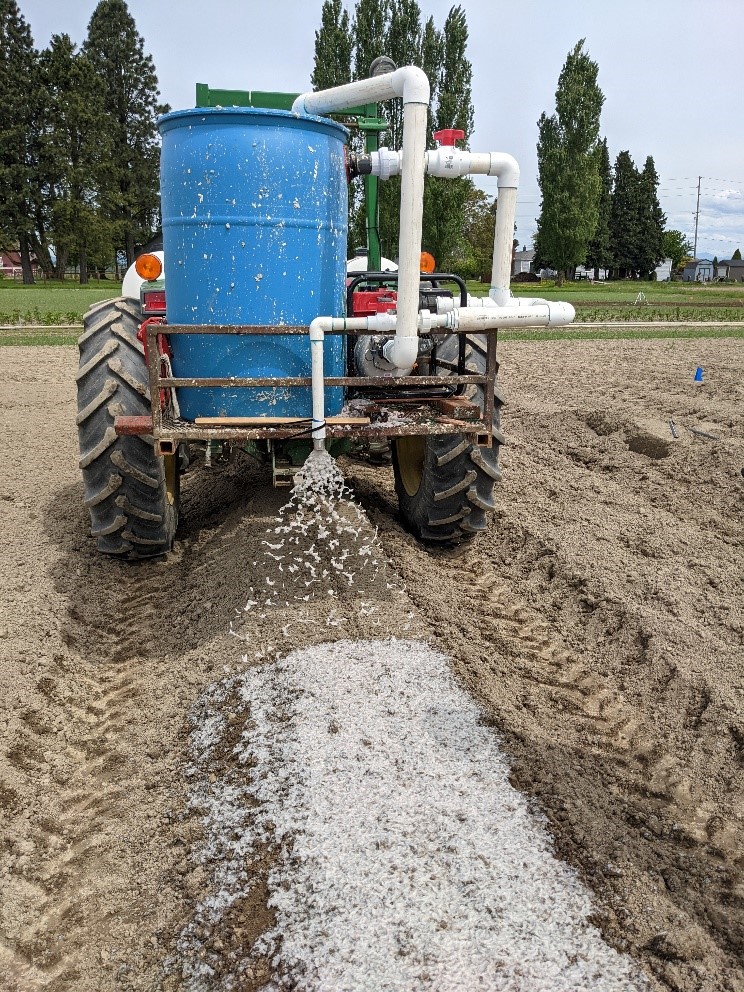
Although the researchers at different experiment stations all aim to apply hydromulch at the same rate per square foot, achieving total consistency across sites is complicated; some of the many variables include the spray volume from different machines, different bed widths, tractor speeds, and the degree of coverage and thickness of the mulch. In a recent meeting, they discussed whether it is more important to have a precisely uniform application rate, which could require multiple passes or manual touch-ups, which may not be practical on a farm scale--or to demonstrate the ability to mechanically apply hydromulch with even coverage. Either way, the team will be tracking the labor, time and material costs of different methods of hydromulch application, as well as the costs of the ingredients and equipment so that Suzette Galinato of WSU can perform an economic analysis. The results of this research will help growers make informed decisions about whether using hydromulches could be a viable alternative to plastic!
Funding

This project was funded in 2021 by the Organic Research and Extension Initiative grant, part of the USDA National Institute of Food and Agriculture. Grant number 2021-51300-34909.
